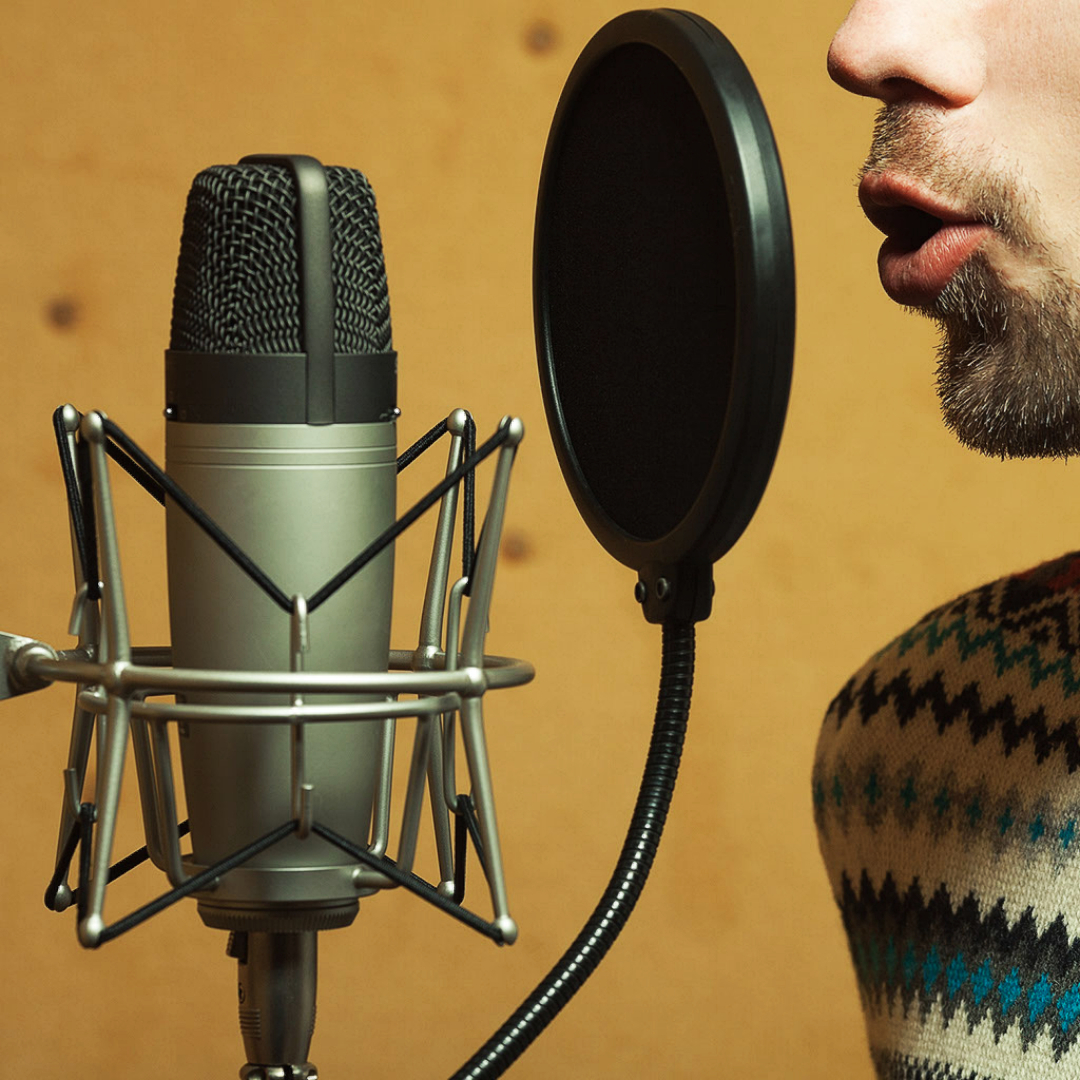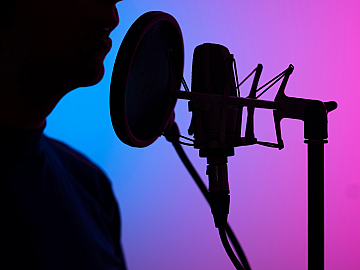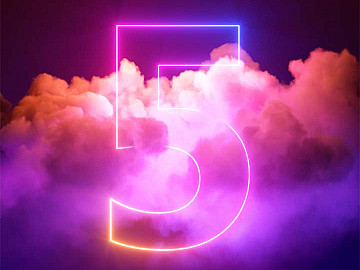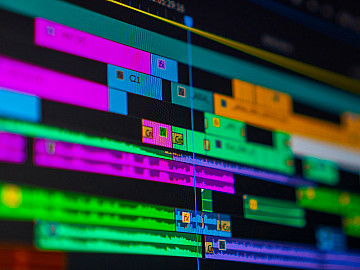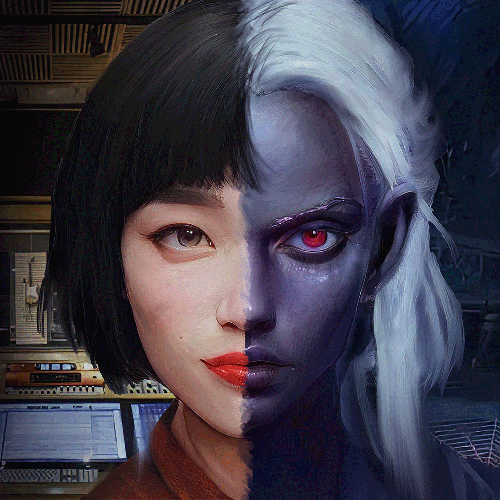Voquent's top voice actors share their tips for completing ADR & dubbing projects from home.
In response to our previous blog, How To Produce ADR Remotely, we had a lot of questions from the voice-over community about how to get more ADR work and how to configure home studios for time-synced recording.
We also had some amazing responses from voice actors who undertake ADR and dubbing projects regularly, so it made perfect sense to put the two together with this follow-up article! A big thank you to:
who all gave up their time to answer our most burning ADR & dubbing related questions.
It's interesting to see how different peoples' experiences of the same thing can be; read on to see what I mean!
Q: How often do you do ADR from your home studio, as opposed to travelling to a client’s studio?
PB: It’s all from my studio now, when I was based at Granada it was mostly dubbing there or at other Manchester studios, but now I’d rather do most things at home, so I just accept the “simple ADR” or overlay dubbing jobs which are not lip-synced, overlaying my VO over non-English interview replies.
MC: Apart from recording on-camera work, I honestly can't remember the last time I recorded at a client's studio: all of my bookings happen in my home studio these days, regardless of the project.

Pictured: Voice Actor Mike Cooper in his home recording studio.
EB: I have been dubbing for 30 years, since 1989. I have dubbed over 2,000 titles between movies and TV series. I never have dubbed from home.
Alex's response: This is very interesting, since we did have a few responses from voice actors who had also NEVER performed ADR in their home studio, and never would! It seems like it is often done remotely these days, rather than dealing with the expense of travel to a specific studio, although this can vary between projects.
Q: What do you find more challenging – dubbing a cartoon from a foreign language, or re-syncing ADR to the lip movements of live actors (i.e. ‘true’ ADR)?
PB: Apart from short sequences, I can’t really do proper lip-sync of live actors at home as I haven’t the technology nor the extreme patience; but dubbing cartoons is much easier and can be great fun. With animations, the mouth movements are far more exaggerated, so it makes for easier syncing. Last autumn, I had a huge job making English versions of the famous classic Russian cartoon series “Prostokvashino.” All the characters! I did it all in Adobe Premiere Pro with a different audio track assigned to each character, as they often talked over each other. I recorded in the program itself with the Russian original in my headphones as Right Channel and my recordings on the Left Channel. Each 15-minute episode took about 5 hours. Live actors are more difficult to dub as there are more subtle emotions and breaths and sighs and so on that are difficult to replicate.
MC: Most of the time, I'm asked to replace sections of foreign dialogue rather than to provide true lip sync. But recently I recorded an on-camera promo for my voiceover business – where I talked to the camera and performed the lines – and I wasn't happy with the audio from the studio, so I ended up replacing the dialogue for the whole thing. It was a great introduction to “true ADR” for me. Pro Tools made it easy to do multiple “loop” takes and then “comp” the best ones into my replacement dialogue track. I was pleased to have the luxury of doing it for myself on my first time out. Now I'm confident of being able to provide this service to my clients.
Alex's response: Cartoon dubbing does pose its own challenges, but it is generally accepted as being easier than lip sync to human actors - which can be particularly if the actor mumbles and hardly moves their mouth!
Q: Do you have much experience in audio post-production for film and TV? If so, has it helped you with recording ADR from home?
PB: I worked as a Channel Controller at Granada for some years back in the ’90s, where we bought in various non-English productions that had to be dubbed. It was long, hard work and very expensive. Things are easier now though with some great software around. I had some videos to fix that I didn’t film, where the presenter’s microphone had a nasty buzz that couldn’t be filtered out, so I got the guy to re-record at about the same speed for every take and I used the Adobe Audition feature “Automatic Speech Alignment” – magic! I have a video you can see here if you’re interested:
MC: I worked in radio and TV for many years before I switched to being a home-based voiceover artist. When I started voicing for places like National Geographic and HISTORY, I asked a lot of questions of the post-production audio guys I worked with. That was what really convinced me to conquer the learning curve and invest the time and effort into putting Pro Tools into my home studio. It really did seem like the best way to work with video, and to time-code, compared to anything else that was available. I took a course on Pro Tools with a tutor, who was able to fill in the gaps in my knowledge, and I haven't looked back.
Alex's response: Learning the software and getting experience is the main thing - and you can do this entirely on your own!
Q: Do you ever get asked for help with adapting scripts for lip-sync?
PB: Oh, yes. Most of my clients are non-English, and a big part of my job even with basic voiceover scripts is to correct English grammar and add many “the” words and, of course, good punctuation! The work of the translator is absolutely key to good ADR. It’s not just translating to English but keeping in mind the mouth movements and the body gestures as well. These people are the unsung heroes of ADR. So I’m often asking clients “Do you mind if I change this word to that…it’ll sync better and it means the same”!
MC: I do get asked from time to time, but I think it's a very particular skill set. Most of what I do is looser than strict lip-sync dubbing, so I prefer to leave this to the dialogue experts.
TB: Yes, I quite often advise my existing clients about scripts. Only too often one language is faster paced than the English language, so scripts have to be adapted and cut back in order to make them work.
Alex's response: This is something I've often had to assist a client with for dubbing and ADR projects as well - it's not uncommon for this sort of work to be a much more collaborative process than a standard "get in the studio and record the script" project.
Q: What DAW do you use? Is there any other software or plug-ins you also use?
PB: Adobe Audition and Adobe Premiere Pro. Cubase Pro sometimes for pitch correction. I also use WavePad for automatic file cutting, and that’s about it!
MC: I use Avid Pro Tools. I've tried a few alternatives, but in terms of how it works with video, time-code, options for punching in and out, pre and post-rolls and so on, I think it has the best set of features for the job.
TB: The DAW I worked with for donkey's years was Wavepad (NCH Software) and Mixpad which is also NCH, but when I updated my Mac to Catalina at the start of this year it wiped out all my DAW. I had planned to switch to Adobe Audition and it's been an absolute game-changer since I was forced to. A few tutorials later and I was off to the races again. Adobe Audition is brilliant for VO. I only wish I had switched years ago.
Alex's response: I would always use Pro-Tools - it is the industry standard in basically every recording studio - but the other DAWs all do very similar things. It's worth just sticking with one you know how to use rather than switching (unless you have to - like Tanya!). However, if you are learning a new one from scratch, I would always recommend Pro-Tools.
Q: Do you think ISDN/Source Connect is used more for ADR than any other aspect of voice-over recording?
JS: No. I only use Source Connect (the standard version is fine).
MC: I do a lot of work over Source Connect that isn't ADR, so my own personal experience would not support that.
TB: I would say in the states that Source Connect is widely used for animation work. However, Source Connect is requested a lot for all sorts of VO work these days.
Alex's response: Source Connect does seem to be used commonly in all sorts of projects these days, although at Voquent we usually recommend recording natively and sending the audio over afterwards, and not bothering with Source Connect at all. It depends on if the client wants an engineer at their end laying the recordings to picture in real-time!
Q: How do you compensate for the latency issues apparent in remote recording sync?
JS: I don’t. I’m sent files of the scenes and relevant clips to be recorded. I find an iPad is great for working off. I’m on Source Connect and directed remotely close to the digital cue. Get a few takes which they are also recording on their end. When they’ve scrunched it together and can see it will work we move on to the next cue. I always record my end for safety too in case Source Connect glitches.

Jay Simon in his home recording studio.
MC: This is where the Standard and Pro versions of Source Connect come into their own, as they support “Remote Transport Sync”. The audio engineer can control the playback of the video in my Pro Tools session remotely, and Source Connect manages the latency in the connection. Essentially, it delays playback of their video by the amount of delay on the line, to ensures that my voice arrives perfectly in sync with the video running at the production facility. It's frame-accurate, and means the engineer can mix live, just as though I were the other side of the control room glass. It's pretty amazing when you see it in action, actually.
Alex's response: This latency syncing that Source Connect sorts out by itself seems like the only possible way to compensate for the latency. However, from anecdotal experience it seems like the main thing is to not compensate for the latency, and just move around the audio. While it may not be in sync at the other end of Source Connect, it will be out of sync by a fixed amount. This can easily be moved by an engineer in a matter of seconds. The most important thing is to just know what the latency is - it's usually consistent. This can be tested by recording a peak (a clap, or a beep - anything!) and sending it down-the-line and just working out the difference from when it was done and when it comes in.
Q: How do you facilitate producers directing online, whilst recording sync to picture, so they can judge the sync remotely too?
PB: I never get directed live for the actual sessions. Just a 10-15 minute try out for the first sections, then I’m left alone.
JS: I get as close to the lip sync in the scene and get a lot of takes. They crunch and sync the recording their end.
MC: Source Connect provides two-way communication throughout the session.
TB: I have never been requested to host an online session where I was directed for ADR work. I have always been sent instructions for projects and produced and sent back to the client/ agent. Even for the news channel, I produced lip-sync/dubbing for, I was not directed for this. I have however facilitated online direction through Source Connect, Skype, and via phone for corporate and commercial projects.
Alex's response: The variety is once again very interesting - it just goes to show there's no one established way of doing ADR remotely! A lot of voices would not do ADR at all if they were not live directed.
Q: Are there any specific bits of equipment you think are an absolute necessity for ADR recording?
JS: A good mic and a DAW obviously. I use Garageband, doesn’t have to be anything too complicated. Source Connect is a must.
MC: I find a “super-wide” 21:9 monitor is ideal – you can run out of space with all the applications you need open!
TB: A good quality and user-friendly DAW is essential. A 'must' is an additional monitor in your sound booth and good quality headphones. You also need a good quality mic. As Alex mentioned in his previous article, shotgun mics are the best for ADR work but pricey. Worth the investment long term though if you want to work on ADR projects a lot. The best piece of equipment is something you can't buy, and that is experience. Not just with ADR, but especially with ADR.

Voice Actor Tanya S Bartlett
Alex's response: Experience is the key, but Source Connect really appears to be the most individually essential program. We rarely require this for standard corporate or commercial projects through Voquent, but if you are looking to do more character work yourself in your own independent quest for work, then it may be worth investing in a Source Connect licence.
Q: How much time should be allowed for ADR / Dubbing projects?
JS: Depends on how many cues. I was paid for a four-hour session in a studio for one cue before on a television series, this probably wouldn’t happen much nowadays! Usually on average if the actor is any good he should be able to cover 15 cues an hour. A session should never be booked for less than an hour but you might want to consider the time it takes to download the scenes you’re sent and other prep involved.
EB: Much depends on the complexity of the text and the character. Here we have a measure of the script that we call “take” (it would be “toma” in Spanish, but we use the English word.) A take would be about 9 lines of script. In one hour, I can do 15 to 25 takes, depending on the complexity of them.

Spanish Voice Actor Eduardo Bosch' home recording studio setup
Alex's response: Once again, this can vary wildly, but the main rule of thumb is that ADR takes a lot longer than normal VO projects.
Q: Have you ever turned away ADR / Dubbing projects, and if so why?
PB: Yes of course. So many inexperienced producers think it’s “easy” to lip-sync. It’s not. ADR is anything but “Automatic”! I’d rather say no; sometimes it’s impossible for what the client is prepared to pay.
JS: No. Not when I recorded in London over twenty years. It was a great way for an actor to make some money. Not very glamorous but usually good fun and very rewarding. The more versatile you were the more you were considered for different projects. The only projects I’ve turned down were in languages I didn’t feel fluent enough to be authentic.
TB: Yes, I have, as ADR work is an entirely different skillset and very 'studio' time-consuming. There have been quite a few occasions where I was offered ADR work for poor rates and it would mean taking my time away from booked in corporate and commercial projects.
Alex's response: Peter is definitely right to say it is "anything but Automatic!" It really is tedious and difficult. However, Jay is also right to say you should take every opportunity that comes up! When recording from home though, you really have to weigh up the costs, mainly in terms of time, to the benefit of gaining more professional experience. Voice actors skilled in ADR are in high demand - so it is always worth building as much experience as you can!
Find Voice Actors for ADR now
Sometimes we include links to online retail stores such as Amazon. As an Amazon Associate, if you click on a link and make a
purchase, we may receive a small commission at no additional cost to you.

